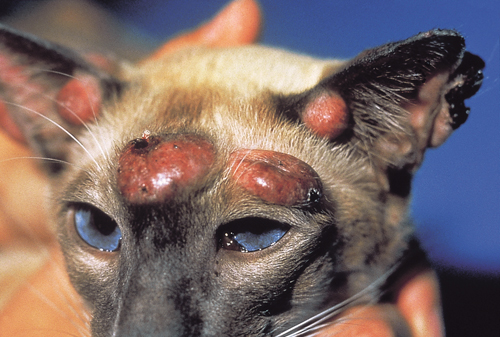Difference between revisions of "Small Animal Dermatology Q&A 11"
Jump to navigation
Jump to search
Ggaitskell (talk | contribs) (Created page with "{{Template:Manson Moriello}} centre|500px<br> <br /> '''A 6-month old Siamese cat with multiple cutaneous nodules on its head, fac...") |
Ggaitskell (talk | contribs) |
||
| Line 37: | Line 37: | ||
{{#tag:imagemap|Image:Next Question.png{{!}}center{{!}}200px | {{#tag:imagemap|Image:Next Question.png{{!}}center{{!}}200px | ||
| − | rect 0 0 860 850 [[Small Animal Dermatology Q&A | + | rect 0 0 860 850 [[Small Animal Dermatology Q&A 12|Next question]] |
desc none}} | desc none}} | ||
[[Category:Small Animal Dermatology Q&A]] | [[Category:Small Animal Dermatology Q&A]] | ||
Revision as of 10:11, 6 June 2011
| This question was provided by Manson Publishing as part of the OVAL Project. See more small animal dermatological questions |
A 6-month old Siamese cat with multiple cutaneous nodules on its head, face, and ears is presented for examination. Skin biopsy findings reveal a histiocytic MCT.
| Question | Answer | Article | |
| What is the cat’s prognosis? |
|
[[|Link to Article]] | |
| What are the three major clinical presentations of MCT in cats? | The three forms of clinical presentation are cutaneous, lymphoreticular or visceral, and gastrointestinal.
Clinical signs of lymphoreticular and gastrointestinal MCTs are indistinguishable:
|
[[|Link to Article]] | |
| What are the two histological subtypes of cutaneous MCT in cats? | The two histological subtypes of feline mast cells are the histiocytic and mast cell type.
|
[[|Link to Article]] | |
